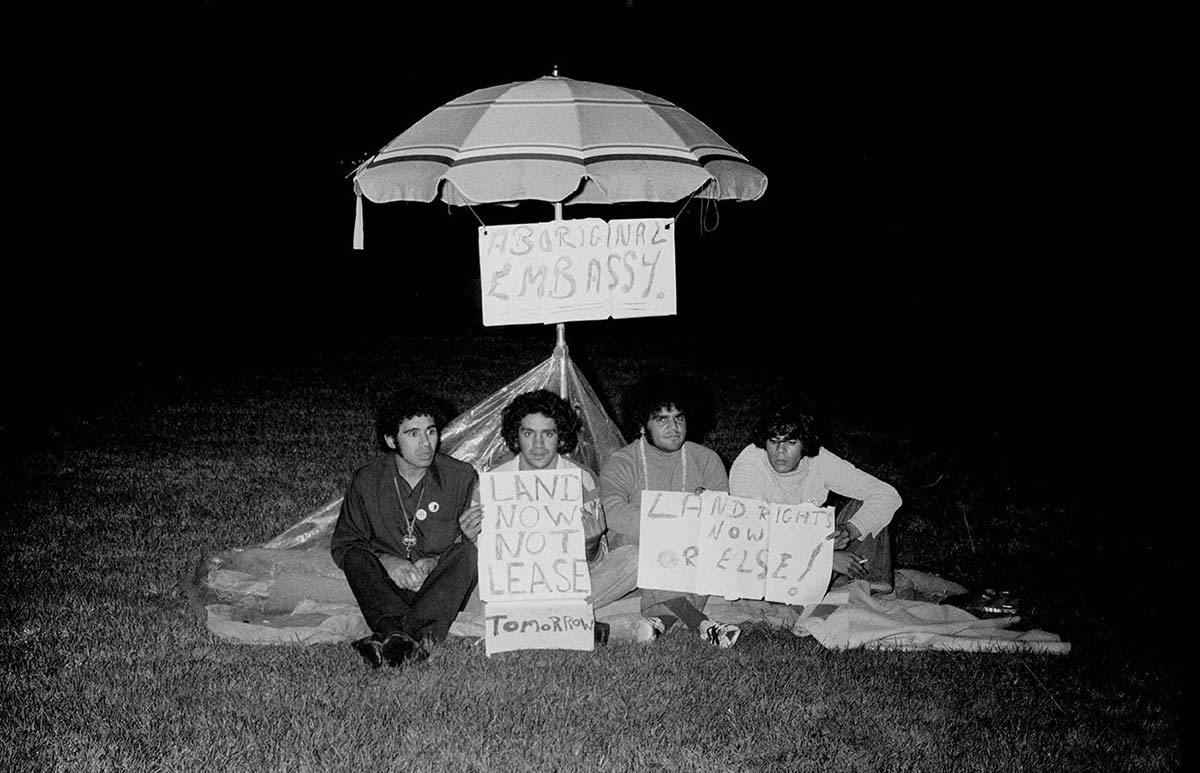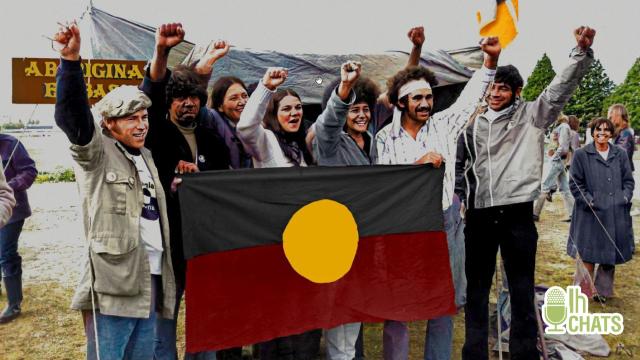Aboriginal and Torres Strait Islander readers are advised this article about Still We Rise contains names and images of people who have died.
Against the backdrop of the Vietnam War, on January 26 (Invasion Day), 1972, a small group of Indigenous activists erected The Aboriginal Tent Embassy, a site of protest against the Australian government. It’s at this point in time that we find ourselves in ABC’s newest film, Still We Rise.
To mark 50 years of the establishment of the Aboriginal Tent Embassy, Still We Rise dives deep into the year that was 1972, a year where Aboriginal activism and the fight for land rights ended up on the global stage.
The Aboriginal Tent Embassy is now a permanent protest occupation site and the longest continuous protest for Indigenous land rights in the world. However, Still We Rise documents the government’s repeated attempts to dismantle the Tent Embassy.
Lifehacker Australia had the immense privilege to chat with the film’s writer and director, John Harvey, about Still We Rise, what led to the formation of the Tent Embassy and the road towards land rights we are still on today.
1972 and the Tent Embassy

From the Vietnam War and its heavily criticised conscription, and continued apartheid in South Africa, to a Federal Election which saw the Labor Whitlam government form power, 1972 was a year of political and social upheaval in Australia.
A nation already tiresome and frustrated with the Australian government woke up on January 26, 1972, to a group of four Indigenous activists under a beach umbrella in front of Parliament House on Ngunnawal country.
Bertie Williams, Billy Craigie, Tony Coorey and Ghillar Michael Anderson were protesting then Prime Minister William McMahon’s dismissal of Indigenous land rights policy.
The group held signs that said ‘Which do you choose?? land rights or bloodshed’ and ‘Why pay to use our own land’.
Despite being threatened, the activists refused to move until the issue of land rights had been dealt with. It was at that point that the government realised it didn’t have any laws allowing for the removal of First Nations Peoples camping on Crown Land.
After quickly passing a law, the government ordered police and troops to smash the embassy down. Each time it was knocked down, the next day activists would erect another Tent Embassy.
During one such removal, an all-out brawl played out in front of cameras and news outlets. Not only were Australians shocked to see the level of force being used on the protesters, but global newspapers ran stories about the Tent Embassy. With it, the message and fight for land rights spread.
“It [the clash] appeared on the front page of The New York Times, BBC covered it and getting that kind of global attention, it embarrassed the governemt but also made people listen. I think that was really important,” Harvey said.
The people behind the fight for land rights

As you could imagine, there was plenty of media coverage of the Tent Embassy’s establishment and subsequent clashes with police and the government.
To create Still We Rise, Harvey revisited countless hours of images and footage from the ABC archives. He then faced the challenge of having to condense everything down to just one hour.
“As a filmmaker, you just never get that opportunity to work in archive in this kind of space, so you really dive deep into that and watch hours and hours and hours of footage to try and bring that down to an hour, which was tough,” Harvey said.
You need to have a clear image of what you want your film to look like if you are going through that amount of archived footage. But Harvey knew right away that he wanted to celebrate and focus on the young and incredibly fierce activists who fought so hard to inspire future generations.
“For me, you know, it happened in 1972 and, unfortunately, a lot of the people involved have passed away since, and so for me, I was keen to hear those voices within the film as opposed to showing some archive and then having people today comment on it,” Harvey explained.
“Part of the reason for that is, I just wanted people to hear the firsthand accounts of people who were there, and what they felt and what they experienced.”
These people go by the names of Bobbi Sykes, Paul Coe, Gary Foley, Tony Coorey, Michael Anderson, Bert Williams and Billy Craigie.
All of these should be names that are celebrated and well-known in Australia. Young Indigenous people, like myself, owe a lot to the incredible activists.
“One of the things that really struck me looking at the material was how young people were… I think Paul Coe was 23 at the time and studying as a law student and they were just so incredibly articulate and strong and, you know, it just amazes me,” Harvey said.
“It’s extraordinary what they did and how they how they spoke up for land rights.”
Many people, many voices, many stories

Obviously having to condense everything down to just one hour is challenging and requires the omission of some stories. Harvey still wanted Still We Rise to include as many voices of the people who were directly involved as possible.
“I was very aware that this is not one person’s story. It’s a story of many and there are many different versions of this story and I’m aware that, as a Indigenous filmmaker, that this is a version of the story of people who were captured in front of the camera,” Harvey explained.
“There were many, many more people, as you’d know, who were involved in the movement who weren’t necessarily filmed for a news clip that night and so it was important for me to make sure that it [Still We Rise] had a range of voices of people involved at the time.”
Something that Still We Rise does that I haven’t seen replicated as well in other films or shows is that it involves a heavy female perspective. One of the most prominent voices in the film is Bobbi Sykes, an inspiring Indigenous author, poet and activist.
When Harvey was going through the ABC archives, he noticed that there was a noticeable omission of female Indigenous voices in a lot of the news stories.
“I really looked within the archive and looked pretty hard to find clips where, you know, women were speaking and speaking up and I think that was really important in this footage. We’ve got some wonderful archive material in there where women are giving their perspective of things,” Harvey said.
“I think at the time it was mostly white men who were the journalists and they, you know, had their own biases on who they covered and how. It was interesting looking at that material today and thinking about reframing that material and reclaiming our stories in that way.”
Passing the baton to the future generation

Harvey hopes that young Indigenous people, and young people in general, are inspired to continue fighting after watching Still We Rise.
“I hope they keep that spring in their step. I have to take my hat off to the younger generation because they are just doing such an extraordinary job,” Harvey said.
“At the end of the film, we show some images of that [recent protests] and so I hope that this film helps to give young people a bit of context from 50 years ago and helps keep them inspired and fueled for the incredible work that they’re doing today.”
Still We Rise premieres Thursday, December 8 at 8:30 pm on ABC TV and ABC iView.

Leave a Reply
You must be logged in to post a comment.